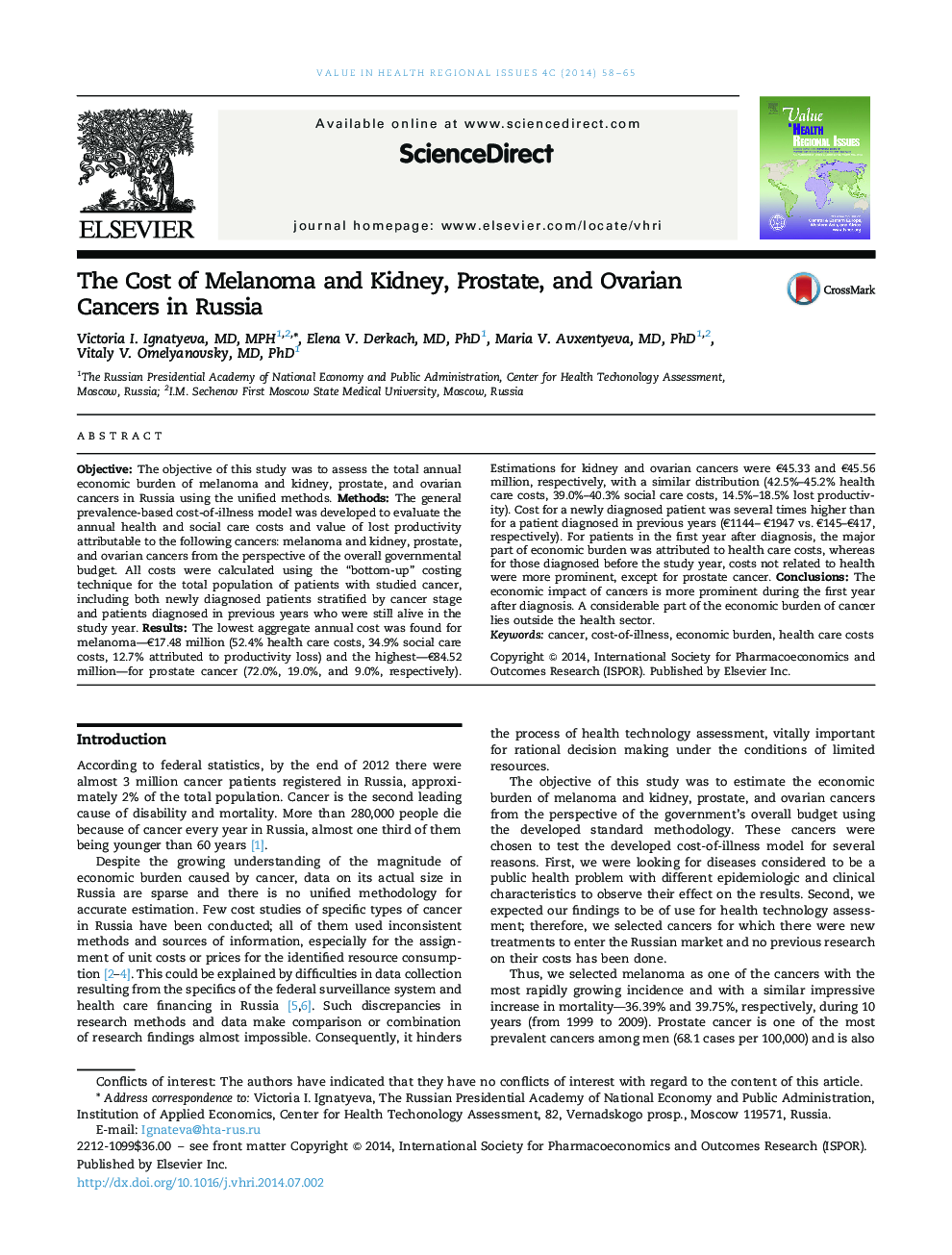| Article ID | Journal | Published Year | Pages | File Type |
|---|---|---|---|---|
| 990885 | Value in Health Regional Issues | 2014 | 8 Pages |
ObjectiveThe objective of this study was to assess the total annual economic burden of melanoma and kidney, prostate, and ovarian cancers in Russia using the unified methods.MethodsThe general prevalence-based cost-of-illness model was developed to evaluate the annual health and social care costs and value of lost productivity attributable to the following cancers: melanoma and kidney, prostate, and ovarian cancers from the perspective of the overall governmental budget. All costs were calculated using the “bottom-up” costing technique for the total population of patients with studied cancer, including both newly diagnosed patients stratified by cancer stage and patients diagnosed in previous years who were still alive in the study year.ResultsThe lowest aggregate annual cost was found for melanoma—€17.48 million (52.4% health care costs, 34.9% social care costs, 12.7% attributed to productivity loss) and the highest—€84.52 million—for prostate cancer (72.0%, 19.0%, and 9.0%, respectively). Estimations for kidney and ovarian cancers were €45.33 and €45.56 million, respectively, with a similar distribution (42.5%–45.2% health care costs, 39.0%–40.3% social care costs, 14.5%–18.5% lost productivity). Cost for a newly diagnosed patient was several times higher than for a patient diagnosed in previous years (€1144– €1947 vs. €145–€417, respectively). For patients in the first year after diagnosis, the major part of economic burden was attributed to health care costs, whereas for those diagnosed before the study year, costs not related to health were more prominent, except for prostate cancer.ConclusionsThe economic impact of cancers is more prominent during the first year after diagnosis. A considerable part of the economic burden of cancer lies outside the health sector.
